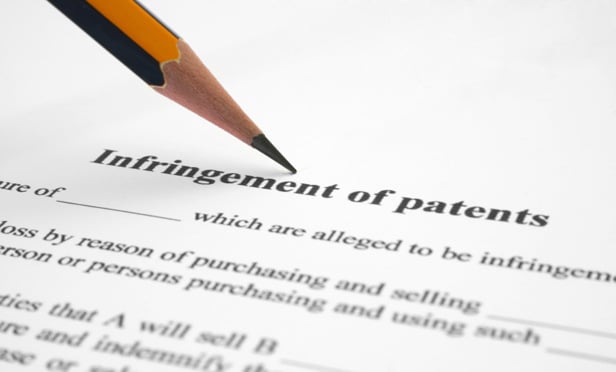Features

Engaging Lawyers in a Follow-Up Initiative: A Case Study
A look at a recent group coaching initiative at a major law firm. Having had success with group coaching in the past, the CMO established a six-month pilot program and chose eight attorneys to participate. Here's what happened.
Features

After a Hurricane: Can the Property Manager Be Blamed for a Lessee's Losses?
The recent decision in <i>Sears Roebuck & Co. and Kmart Corp. v. W/S Lebanon LLC</i> seems timely in light of the fact that commercial landlords, tenants and their insurance providers are grappling with the problems caused by the extreme wind and rain of hurricanes. Here's what happened in that case.
Features

New-Wave Legal Challenges for Bitcoin and Other Cryptocurrencies
As the adoption of cryptocurrencies spreads throughout the business and financial sectors, so too do the concerns that lack of regulation render the new-age currency susceptible to fraud, manipulation, and to being used as a vehicle for money laundering. Nevertheless, recent efforts by U.S. enforcement agencies to apply and enforce financial regulations mean greater scrutiny than ever before.
Features

Laterals: When Is the Best Time to Make a Move?
If you are a partner considering a lateral move, then you are probably focused on the boost a new firm could offer your practice, and on cultural fit. However, the authors' review of the 2,353 partners who moved between Am Law 100 firms in 2010 through 2012 suggests that some more prosaic factors matter too.
Features

The New Patent Venue Regime
Venue in patent cases lies "in the judicial district where the defendant resides, or where the defendant has committed acts of infringement and has a regular and established place of business." Since 1990, the Federal Circuit interpreted the term "resides" coextensively with the general venue statute such that patent venue lay where the defendant was subject to personal jurisdiction. But this year, the Supreme Court greatly narrowed that definition in <i>TC Heartland v. Kraft Foods</i>. The Federal Circuit, in turn, interpreted the newly-relevant alternative phrase. After two decades of relaxed patent venue rules, these decisions work a seismic shift in patent litigation.
Features

The Food Safety Modernization Act
<b><i>Part One of a Two-Part Article</i></b><p>By being proactive in adopting safe food processing operations, such companies hope to protect their reputation and business from the negative publicity and possible financial disaster arising from the sale of contaminated food and non-compliance with the Food Safety Modernization Act (FSMA).
Features

Social Media: Questions of Admissibility and Ethics
<b><i>Part One of a Two-Part Article</i></b><p>This two-part article is divided into three sections: 1) Social media, defined; 2) Examples of how social media has been used in family law cases; and 3) Ethical considerations for attorneys who gather social media evidence.
Features

Reflections on the Life Partners Holding Inc. Bankruptcy
Many bankruptcy practitioners are at least somewhat familiar with the highly publicized proceedings involving Life Partners Holdings Inc. (LPHI), a company that sold fractional ownership interests in life insurance policies — referred to as life settlements. This case was as complex as any could imagine and, as the Trustee appointed to manage this bankruptcy, the author had a front-row seat.
Features

AIM 1-2-3
There is a patented methodology that follows the same path that the introduction of depreciation followed, with the impact being similar in its influence, power and effect: The AIM (Actuarially Initiated Measurements) Program. An employer using this methodology realizes the ability to uncover and maximize missed opportunities to control fluctuations and variations in earnings per share (EPS).
Features

Discovery Strategies for a Creditor in a Bankruptcy Case
<b><i>Beyond Filing a Proof of Claim</b></i><p>This article explains the rights of a creditor, whether an equipment financier or otherwise, to pursue examinations of a debtor in bankruptcy in order to obtain sworn testimony and information that may be helpful to the creditor.
Need Help?
- Prefer an IP authenticated environment? Request a transition or call 800-756-8993.
- Need other assistance? email Customer Service or call 1-877-256-2472.
MOST POPULAR STORIES
- Major Labels File Lawsuits Over AI Companies' Alleged Copying of 'World's Most Popular' RecordingsMajor record labels including Capitol Records and Sony Music Entertainment sued two music-focused generative artificial intelligence companies, accusing them of "willful copyright infringement on an almost unimaginable scale."Read More ›
- Leveraging the Patent Professional for New Venture DevelopmentBusiness-focused patent protection fundamentally improves the ability of a given product or process to attract a market. It is important for patent professionals to structure regular interactions with business leaders to both impact early business decisions, as well as gain alignment to an individual industry's dynamics. While there can be no fundamental template applicable to all technologies and all business needs, this article is intended to be a guide for efficient integration.Read More ›
- Removing Restrictive Covenants In New YorkIn Rockwell v. Despart, the New York Supreme Court, Third Department, recently revisited a recurring question: When may a landowner seek judicial removal of a covenant restricting use of her land?Read More ›
- When Is a Repair Structural or Nonstructural Under a Commercial Lease?A common question that commercial landlords and tenants face is which of them is responsible for a repair to the subject premises. These disputes often center on whether the repair is "structural" or "nonstructural."Read More ›
- Why So Many Great Lawyers Stink at Business Development and What Law Firms Are Doing About ItWhy is it that those who are best skilled at advocating for others are ill-equipped at advocating for their own skills and what to do about it?Read More ›
